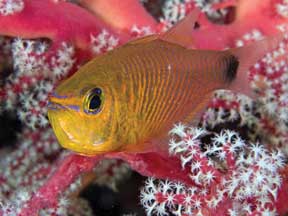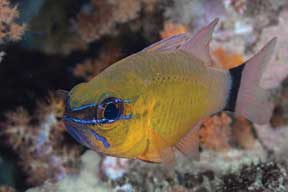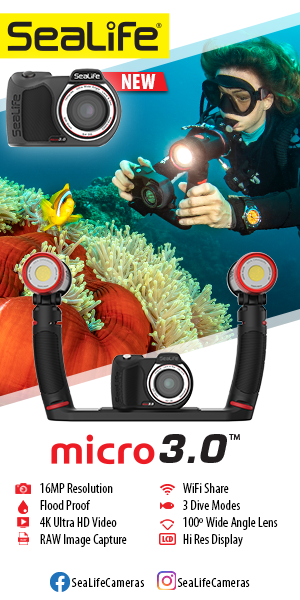Negative space refers to everything in a photograph other than the subject. Skilled photographers routinely turn images of rather common subjects into memorable photographs with good use of negative space.

Photo by Marty Snyderman

Photo by Marty Snyderman
Consider the two images shown here. The subjects in both shots are cardinalfish in similar poses. The image on the bottom of the page is a rather ordinary shot, and lacks strong visual appeal. While the photograph serves to identify the fish, it is basically what I consider a snapshot as opposed to an impactful photograph.
The image shown on top is a much more interesting image. The positioning of the cardinalfish in front of the complementary colorful soft coral in this shot gives this image much stronger effect and visual appeal. This is a photograph.
Of course, working with fish and other animals means that you cannot control exactly where your subjects will be in relation to elements that might make complementary negative space. But quite often we do have the option of looking for interesting subjects that are near sea fans, soft coral, sponges and other organisms and structures on reefs and wrecks that can be used as image-enhancing negative space. Whenever you have the option, look carefully to see if you can discover subjects around sponges, soft corals and areas that can be used as good negative space. Concentrate your efforts in this way and the number of good opportunities that present themselves will probably surprise you.
Negative space doesn’t always have to consist of vivid colors. In fact, in many instances a dark background or the black water of night serves as excellent negative space. The objective is to use negative space to complement your subject in a manner that adds visual impact, making your image and your subject more memorable.


